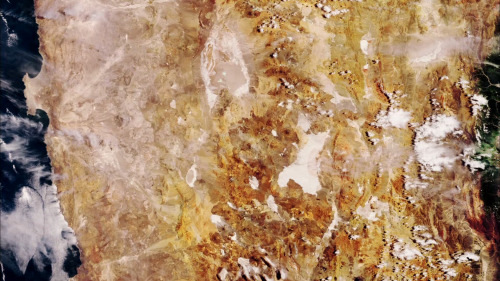9/10
Nostalgia For The Light, Patricio Guzmán's latest documentary about his native Chile, is a poetic, phenomenal work of both genius and horror.
Guzmán begins the story describing his childhood love of astronomy. From here he moves to the Atacama Desert, a strip of land which covers over 100,000 square miles, and the preferred destination for professional astronomers because of the clear skies above it. Working around the astronomers on the floor of the desert are archaeologists, who trace the history of the area through fossils and etchings in the rock face. A parallel is drawn between both groups, as they try to peace together the past from the scarce clues left to them. Both also attempt to answer fundamental questions about the purpose and origin of life and of humanity.
From here Nostalgia winds in another group who are seeking answers about the past - relatives of political prisoners who disappeared under the Pinochet, their bodies scattered in the vast desert without markings or a proper burial. Despite the seeming impossibility of the task, they continue their search - a new body is found every once in a while to keep their hopes up. Guzmán conducts heartbreaking interviews with some of the searchers, as they describe how they often find just part of body (the result of corpses being buried and re-buried to make finding them even more difficult) but are still able to find a morsel of closure in a foot, or a jawbone.
No matter what strands of stories Guzmán is following - they intersect each other throughout - the film looks consistently stunning. The images of far off solar systems and constellations, as seen through powerful telescopes, reveal twisting spirals of immense beauty and colour. Even as a harsh contrast to this the never-ending dunes and rocks of the Atacama look beautiful, in their own unforgiving way. At various points throughout the film flecks appear super-imposed over the images, like specks of dust floating in a ray of light. It is never clear what they represent; glistening stars, sand whisked by the wind, or the memories of the lost bodies buried in the desert, floating in an emptiness.
The collage of images and sound, perfectly fitted, recall Godfrey Reggio's Koyaanisqatsi: A Life Out Of Balance, with the legacy of the Pinochet regimes crimes against humanity that give Guzman's work a drive, and an emotional tie.
Guzmán's point recalls the old saying "those who do not learn from history are doomed to repeat it". We need an understanding of the past to live in present. Whether in the stars, or the earth, that is what we are searching for.


No comments:
Post a Comment